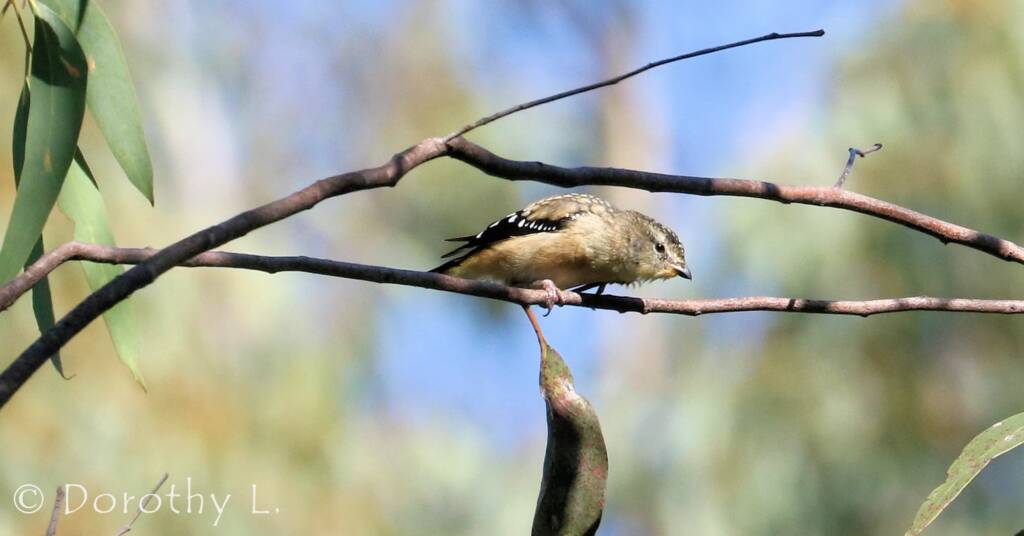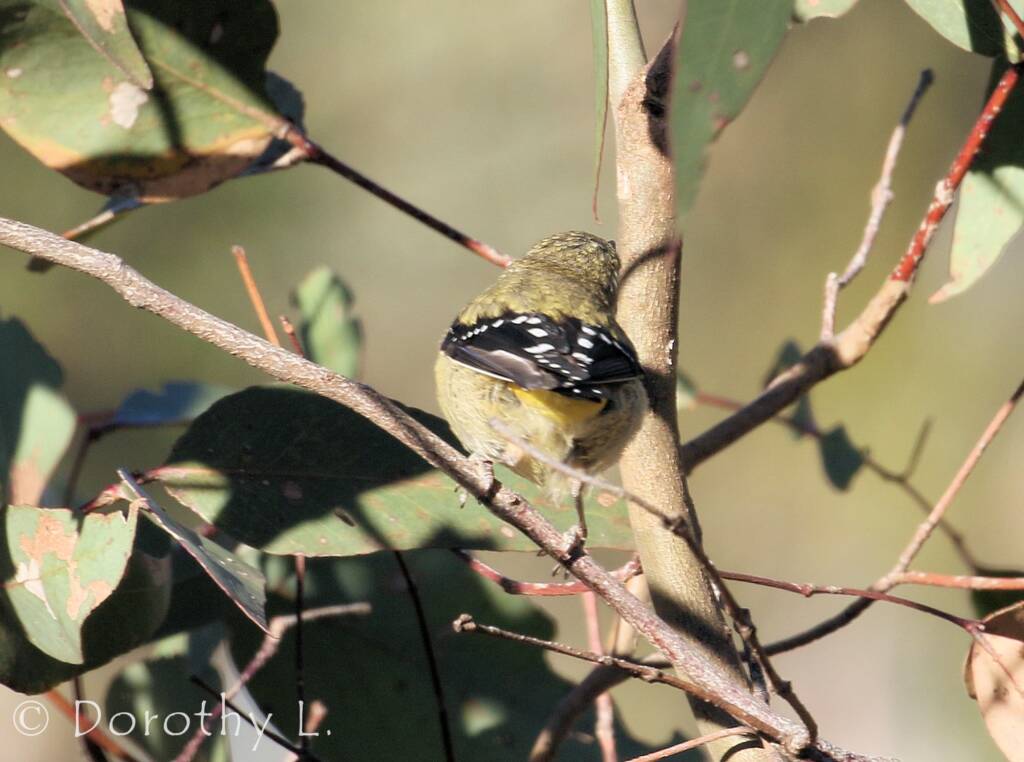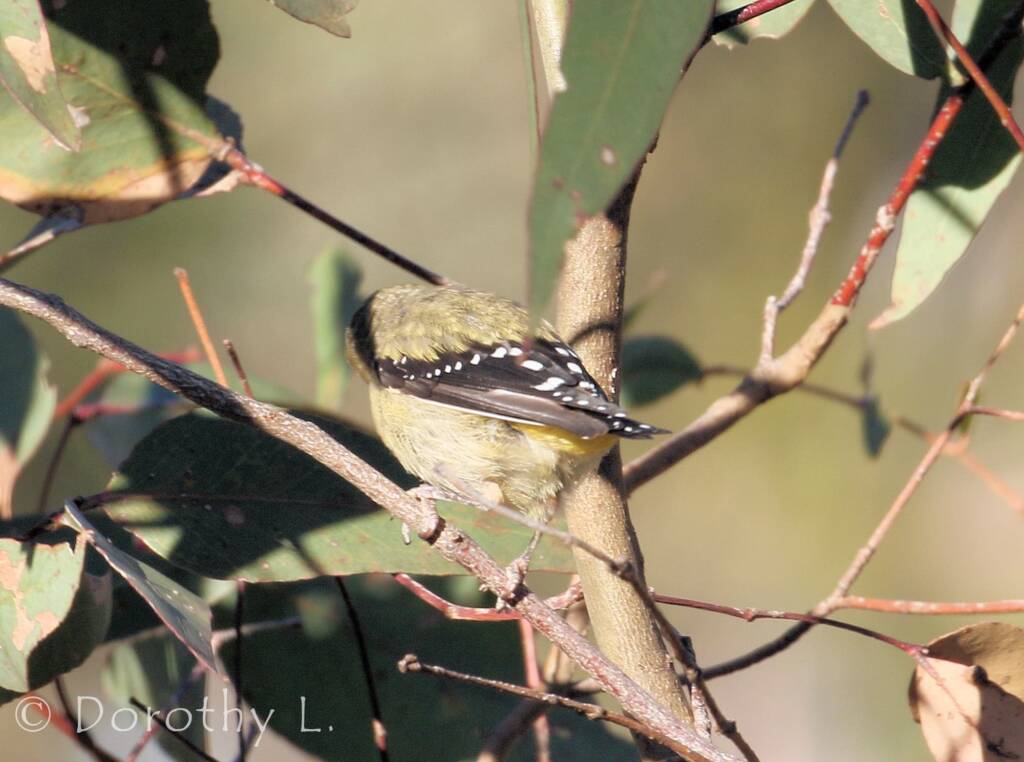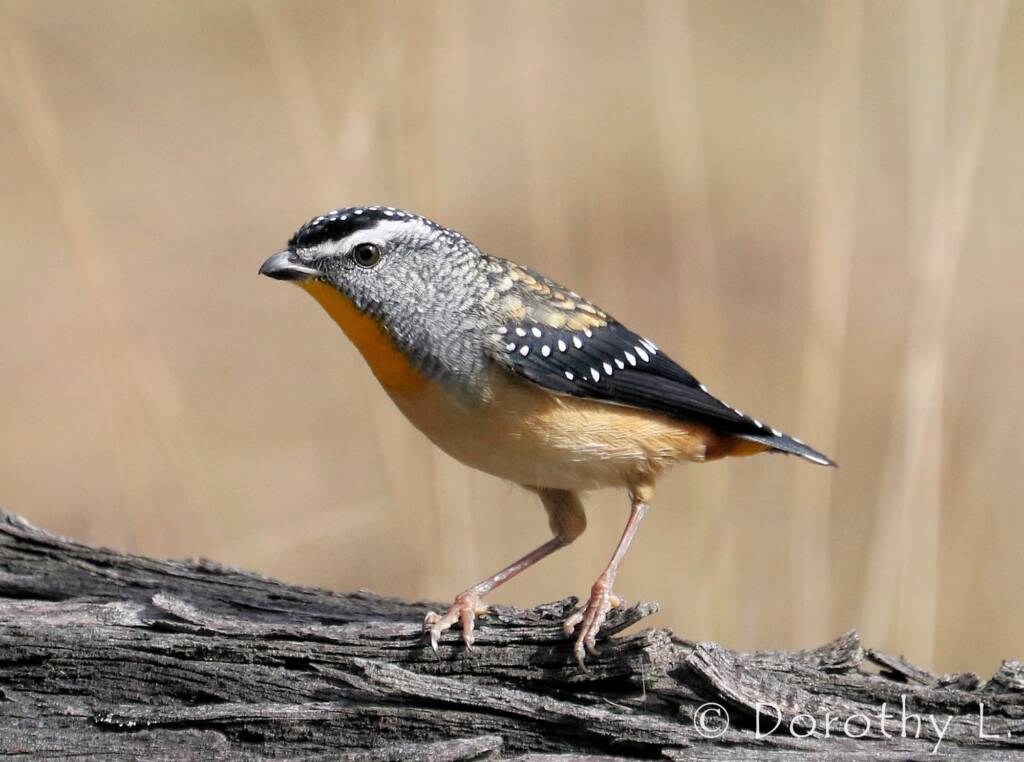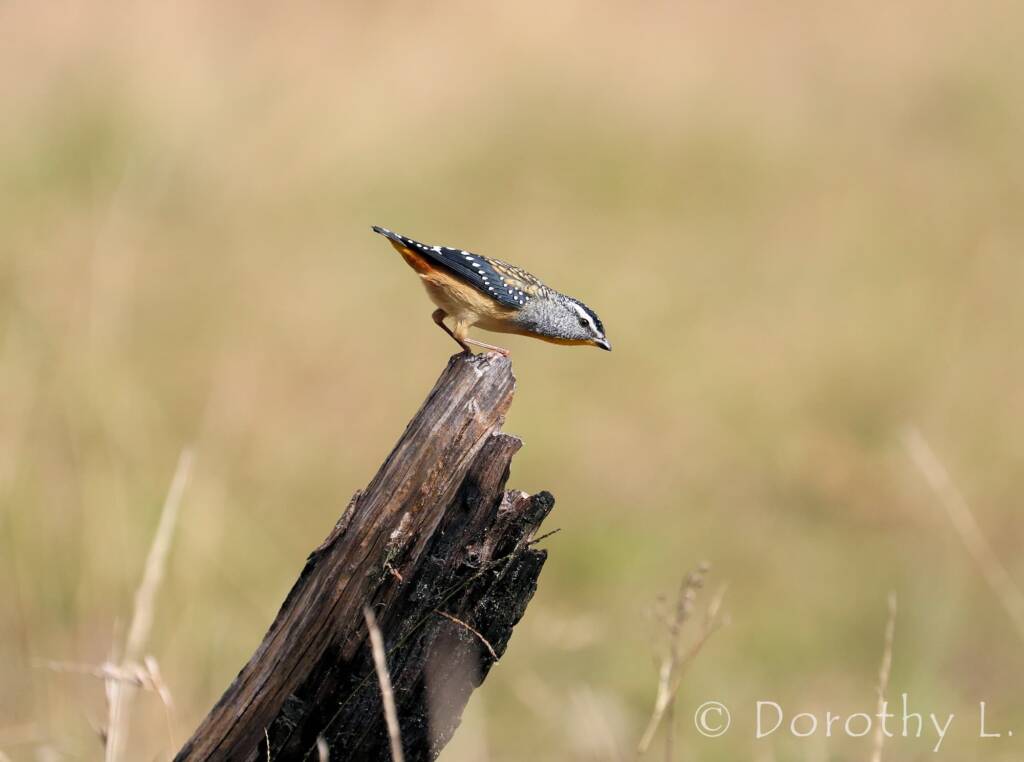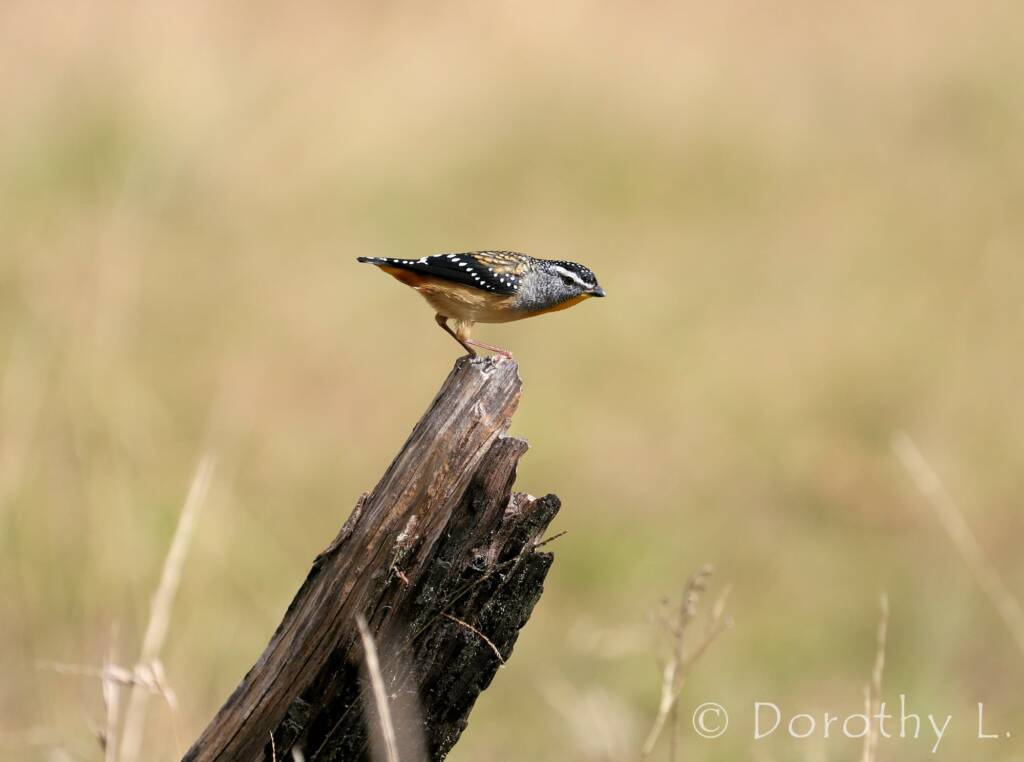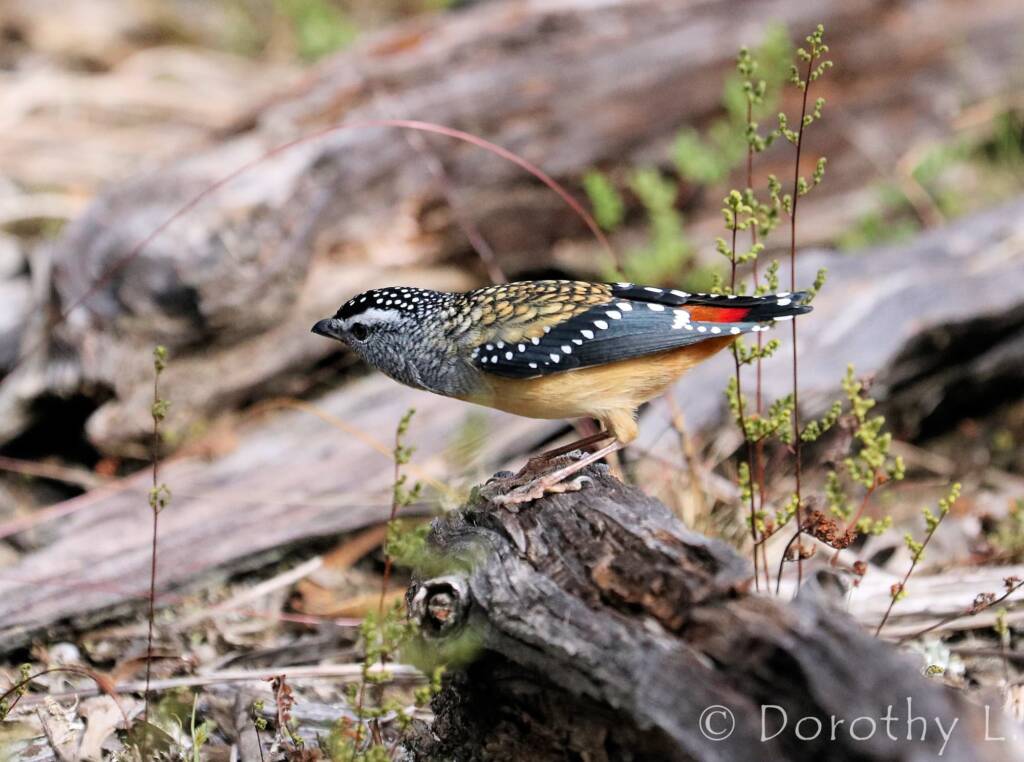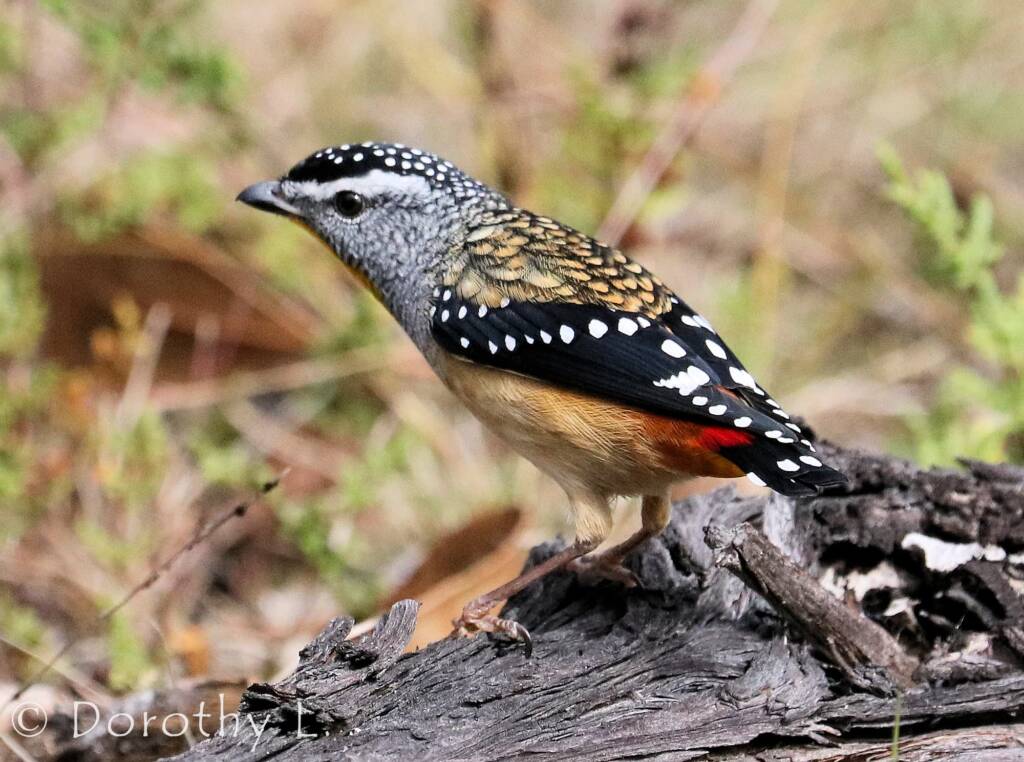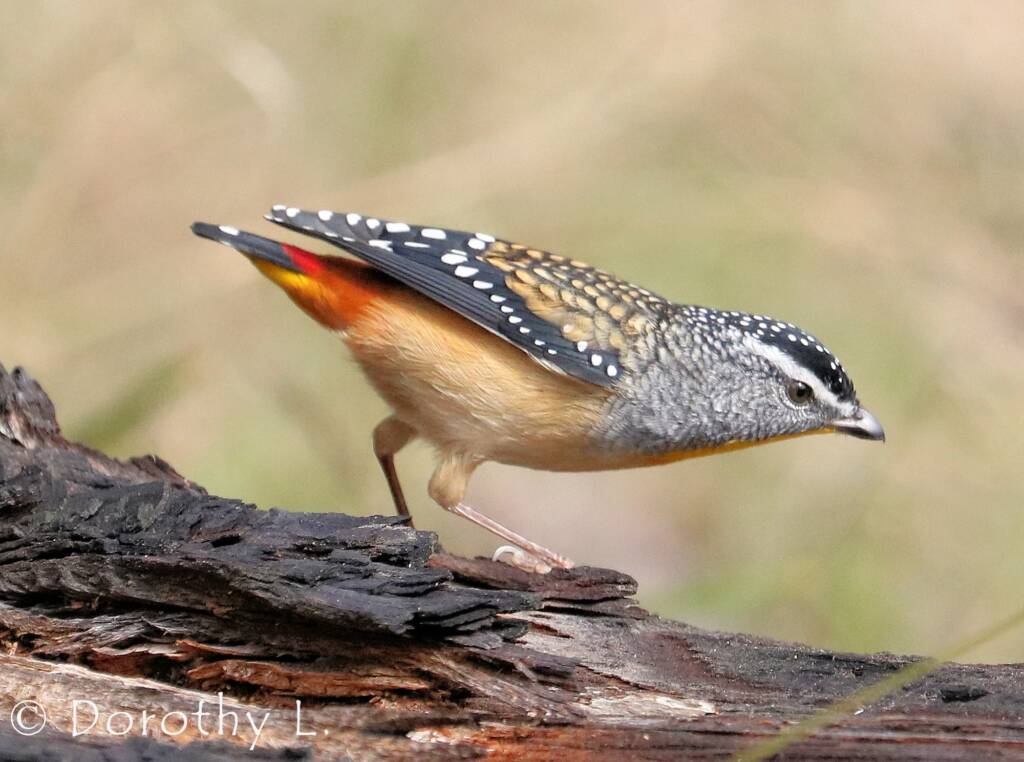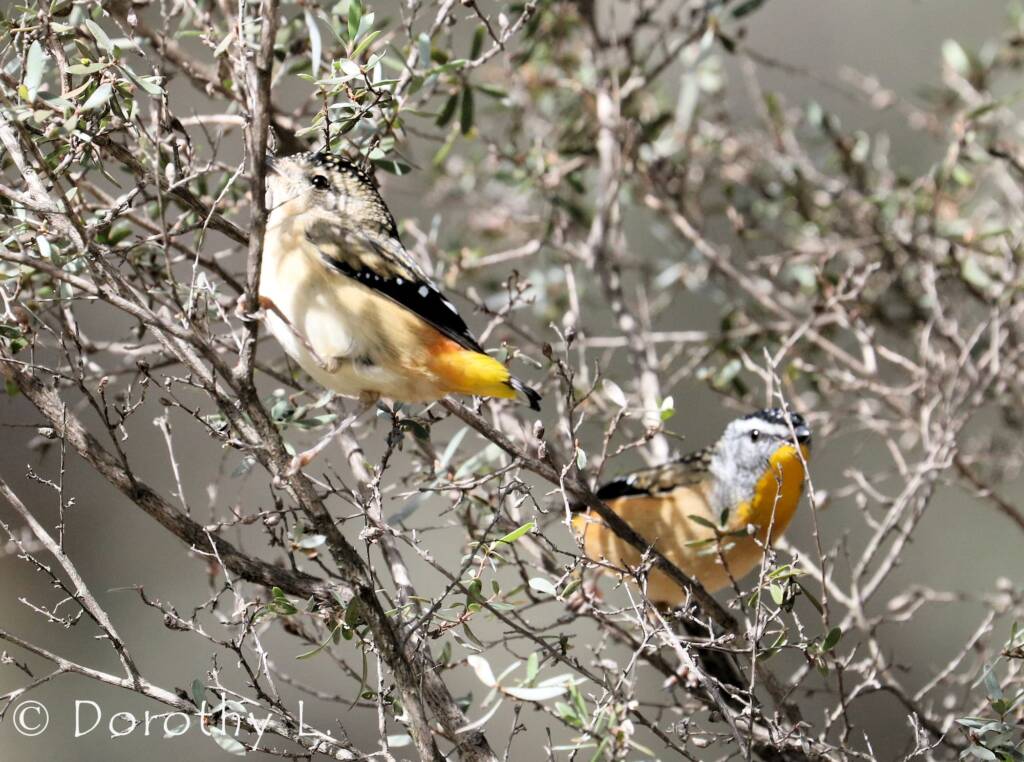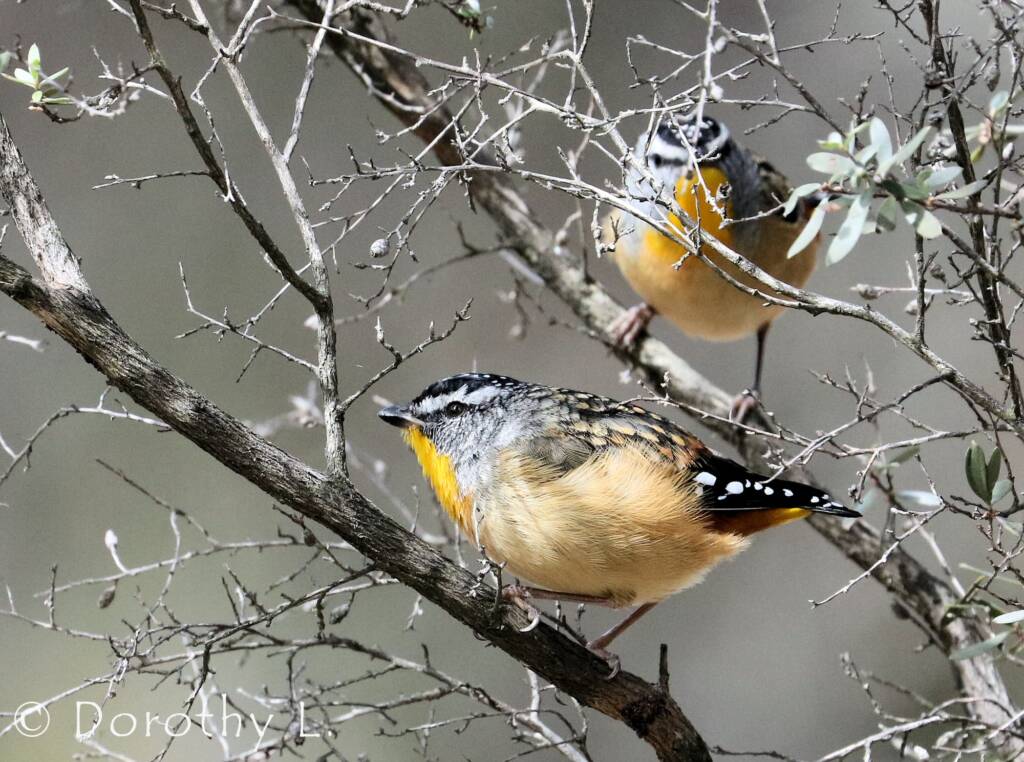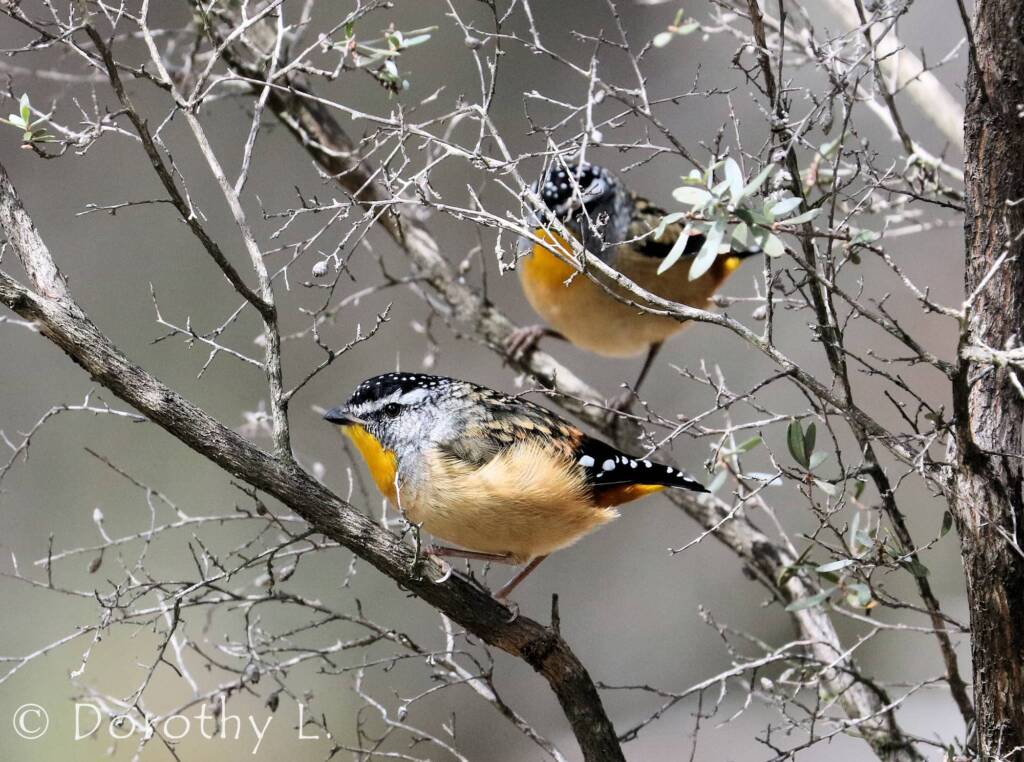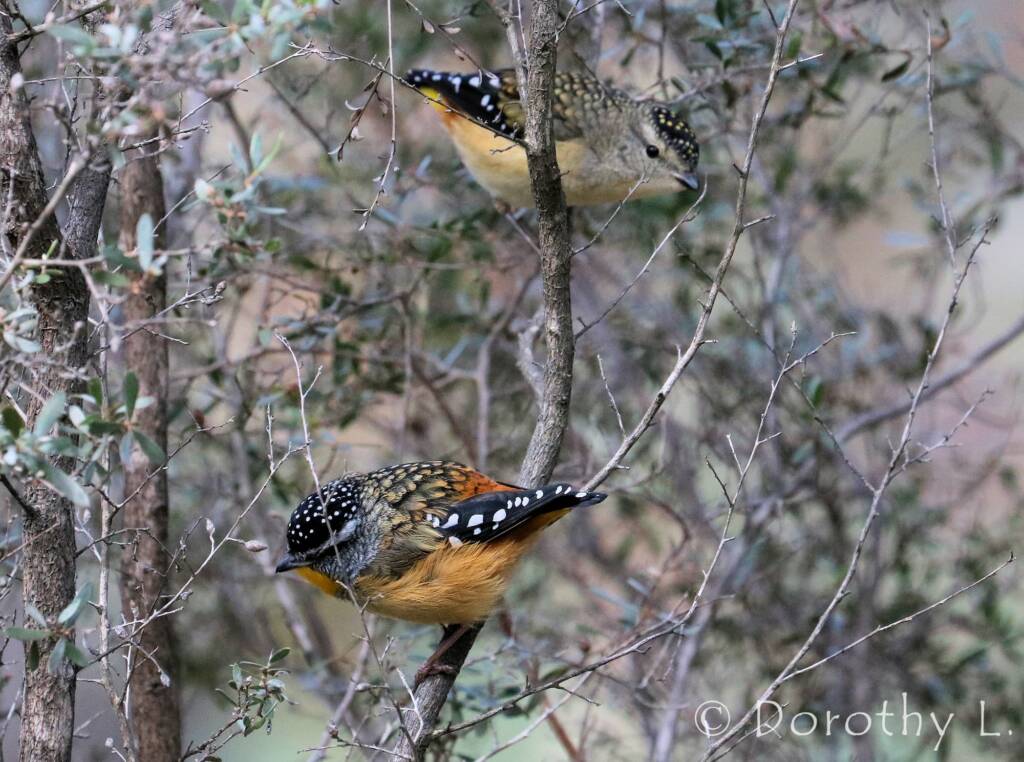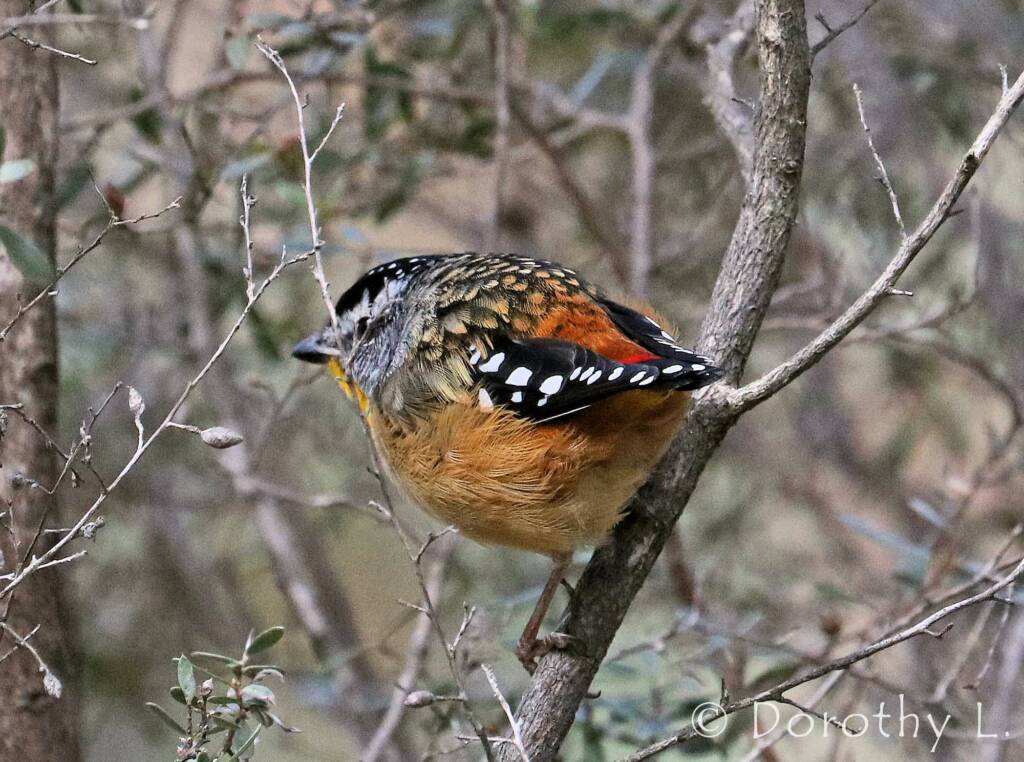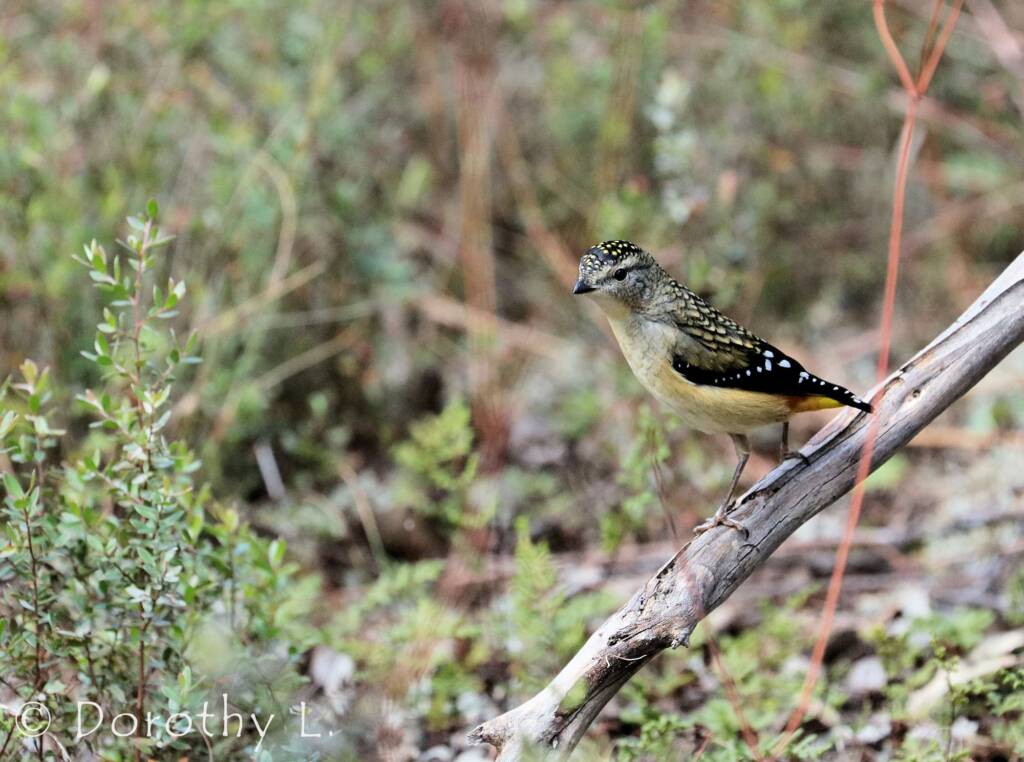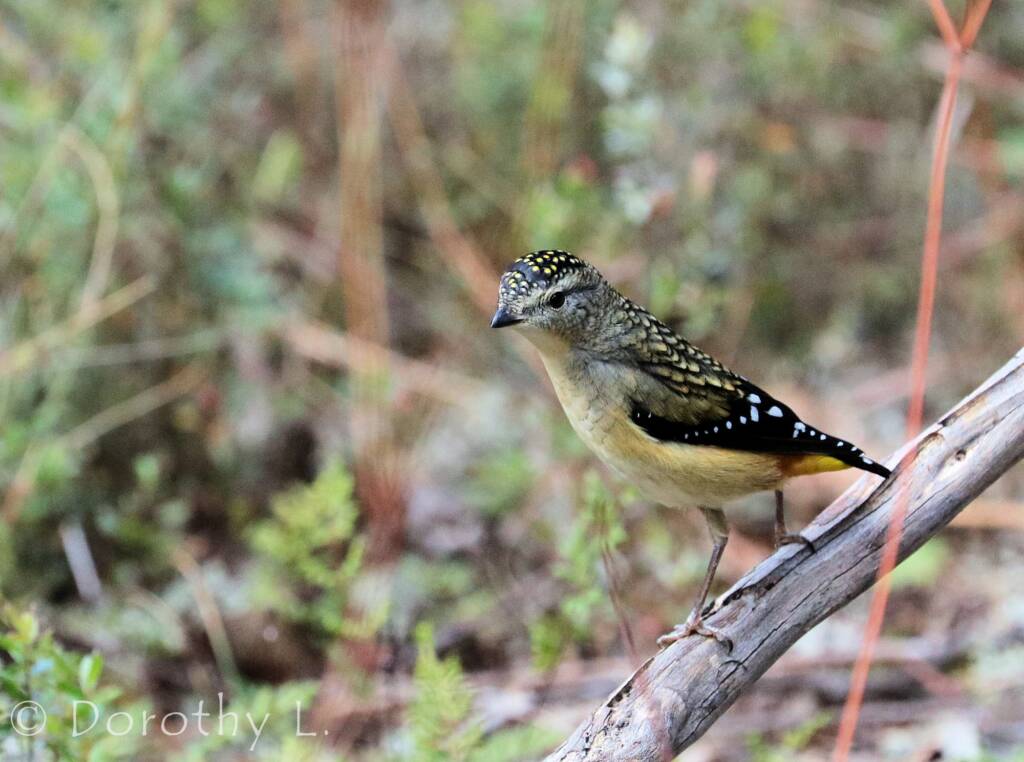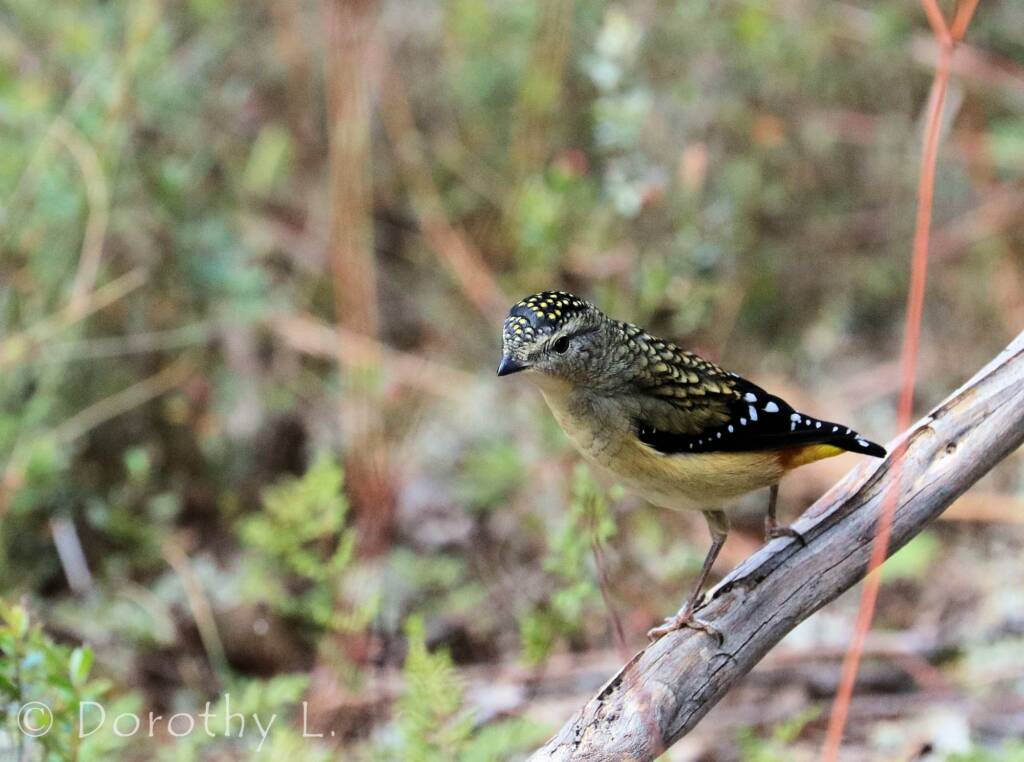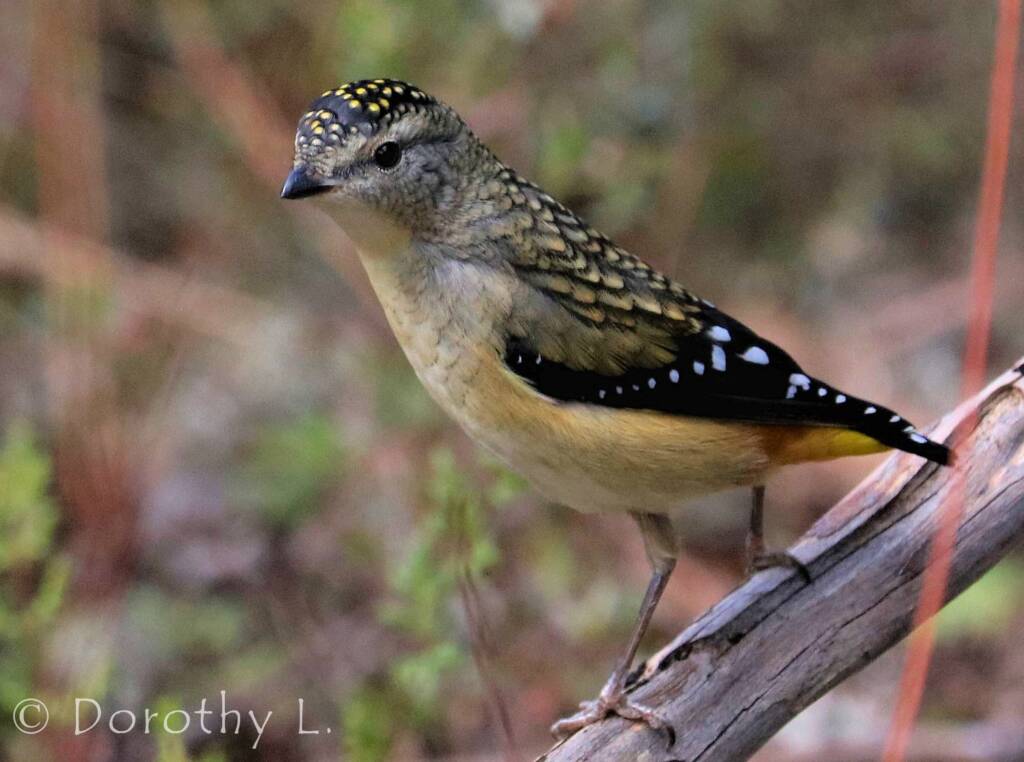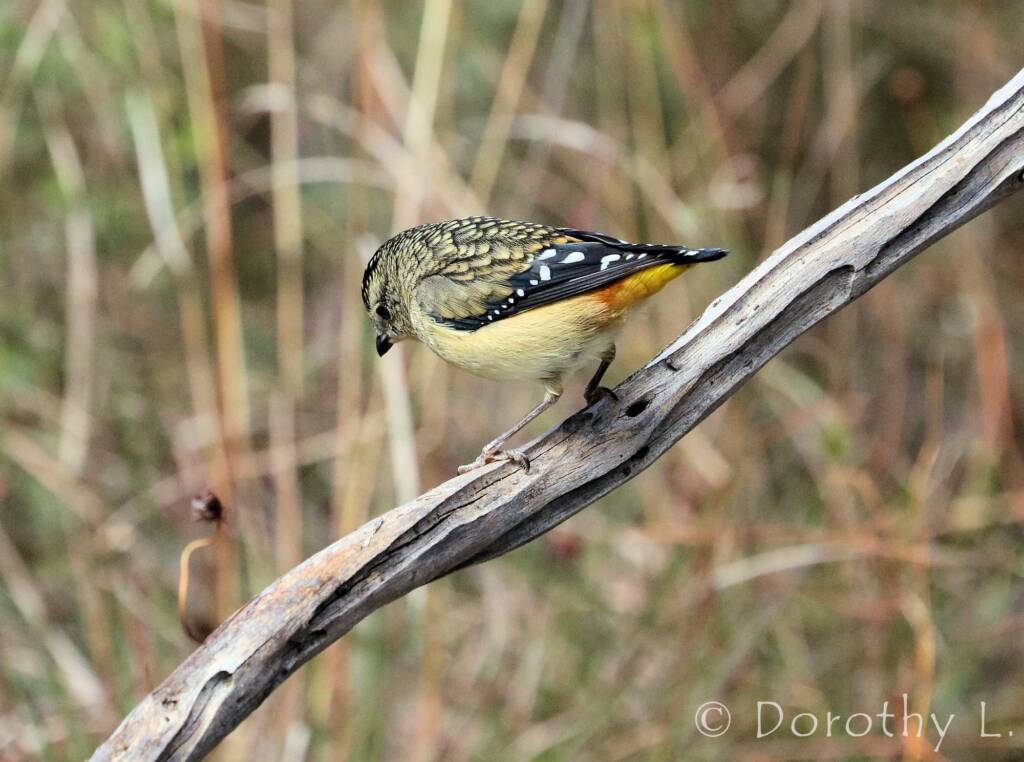Spotted PardaloteSpotted Pardalote – movement
The colourful Spotted Pardalote (Pardalotus punctatus) is one of the smallest of the Australian birds measuring between 8 to 10 centimetres in length. It is moderately common in various fertile parts of Australia (including the east coast, the south-east, and the south-west corner).
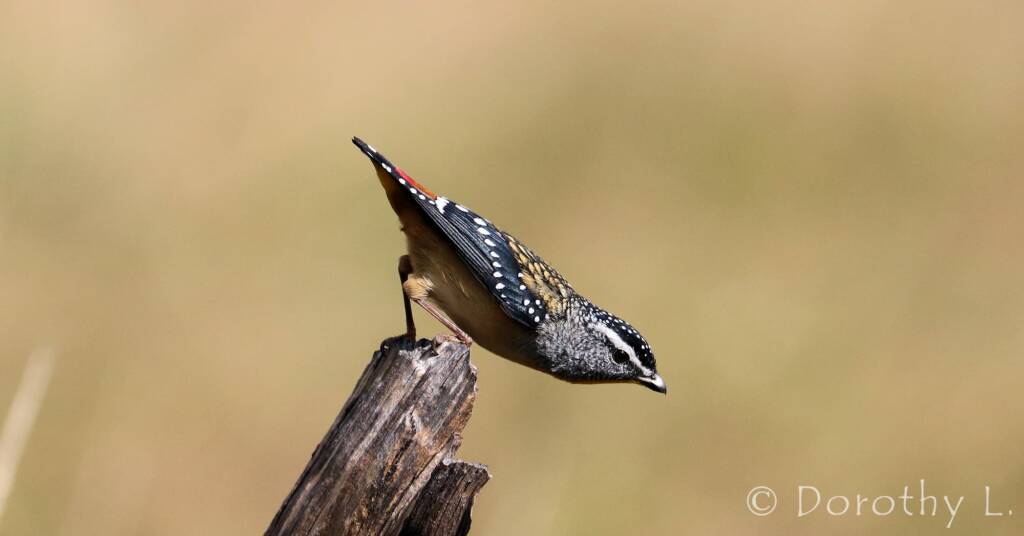
There are three subspecies recognised. The Wet Tropics Spotted Pardalote (subspecies militaris), found in north-eastern Queensland; the Yellow-rumped Pardalote (subspecies xanthopyge), found in the drier inland regions of southern Australia, in habitats of semi-arid Mallee woodlands.1
566. Pardalotus punctatus xanthopyge McCoy, 1866
The Directory of Australian Birds: Passerines, author R. Schodde and I. J. Mason ISBN 9780643102934, CSIRO Publishing
Males with back spotted finely white, rump rich mid yellow sharply demarcated from red distal bar, throat rich mid yellow, breast and belly plain cream, flanks greyer, undertail coverts uniformly rich mid yellow,m females with back spotted finely buff breast cream to pale grey over flanks; size large, with proportionally small bill.
8159. Pardalotus punctatus millitaris Mathews, 1912
The Directory of Australian Birds: Passerines, author R. Schodde and I. J. Mason ISBN 9780643102934, CSIRO Publishing
Males with back spotted rather coarsely off-white to cream-buff, rump deep ochreish rust merging into red distal bar, throat deep yellow with little or no deeper ochreish buff border, breast, belly and flanks cinnamon-buff, undertail coverts rich yellow; females with back moderately spotted buff, breast pale buff to mid cinnamon-buff over flanks; size small, with proportionally large bill.
8160. Pardalotus punctatus punctatus
The Directory of Australian Birds: Passerines, author R. Schodde and I. J. Mason ISBN 9780643102934, CSIRO Publishing
Males with back spotted coarsely deep buff wearing paler, rump deep ochreish rust merging into red distal bar, throat deep yellow, bordered by deep ochreish buff across centre of breast which grades to cinnamon-buff over flanks and belly, undertail coverts depp yellow with cinnamon base; females with back spotted rather coarsely buff, breast pale buff to mid cinnamon-buff over flanks; size large, with proportionally small bill.
The Spotted Pardalote range widely through the eucalypt woodlands and forests spending a lot of their time feeding through the foliage that are high up gum trees. They are seen closer to the ground when nesting and when drinking water.
Nesting pairs maintain a territory over a few hectares. Their nest is made from grass, built in a tunnel underground under tree roots and sand banks. They are also known to nest in existing tree hollows, garden beds or other useful hollows that can be close to urban housing.
and on occasions have been known to enter pipes and other holes in buildings. Once upon a time when we lived in Canberra we noticed a pair searching for a nest site around the foundations of our house, so we provided them with a ready-made hollow consisting on a clay pot on its side with and entrance tube of 2″ PVC pipe which we buried in the ground. They accepted it readily and when the nestlings grew larger, it was great to sit above on the verandah and hear their pleading calls which were amplified by the artificial structure, rather like an organ pipe.
Spotted Pardalote – Pardalotus punctatus, Australian Birds, Graeme Chapman, National History Photographer – Ornithologist
Common name
Diamond Bird, Spotted Pardalote, Spotted Diamond-bird

- Scientific classification
- Kingdom: Animalia
- Phylum: Chordata
- Class: Aves
- Order: Passeriformes
- Family: Pardalotidae
- Genus: Pardalotus
- Species: P. punctatus
- Binomial name: Pardalotus punctatus
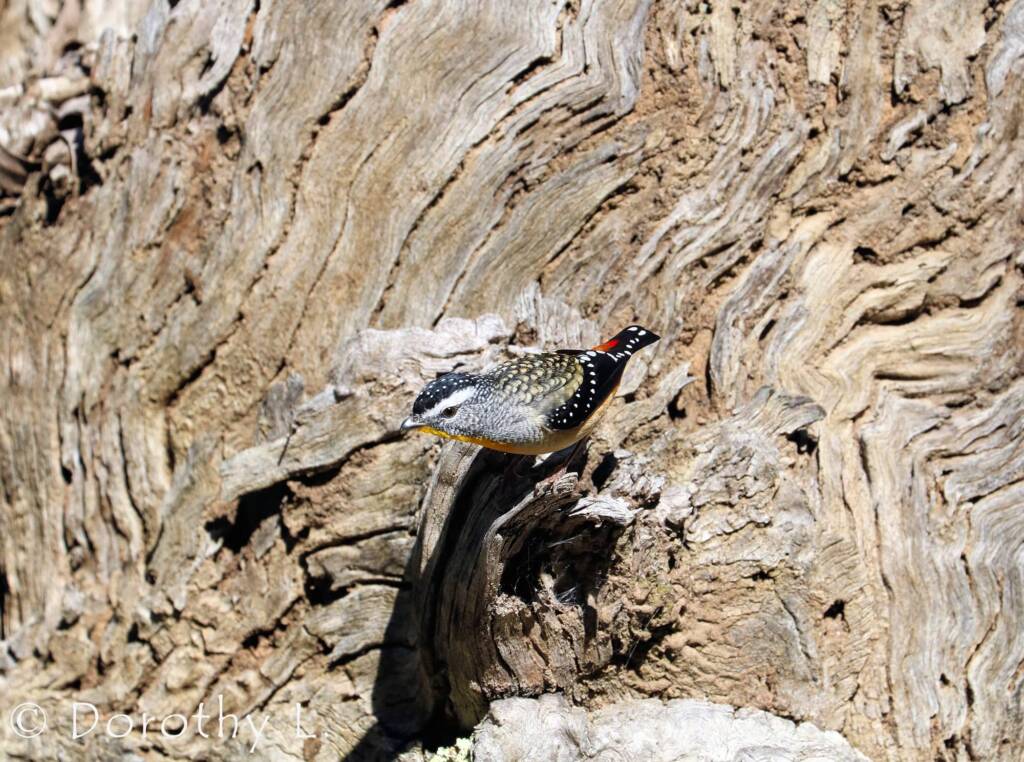
Footnote & References
- Spotted pardalote, https://en.wikipedia.org/wiki/Spotted_pardalote (last visited Aug. 2, 2021).
- Schodde, Richard; Mason, Ian J. (1999). The Directory of Australian Birds: Passerines. A Taxonomic and Zoogeographic Atlas of the Biodiversity of Birds in Australia and its Territories. Collingwood, Victoria: CSIRO Publishing. pp. 122–23. ISBN 9780643102934.
- Spotted Pardalote – Pardalotus punctatus, Australian Birds, Graeme Chapman, National History Photographer – Ornithologist
- Spotted Pardalote (Pardalotus punctatus), Birds of Australia, www.mdahlem.net
Spotted PardaloteSpotted Pardalote – movement
PardalotesRed-browed Pardalote Spotted Pardalote Striated Pardalote
BirdsApostlebird Australasian Darter Australasian Figbird Australasian Gannet Australasian Grebe Australasian Pipit Australasian Robins Australasian Shoveler (Spatula rhynchotis) Australasian Wrens Australian Babblers Australian Bustard Australian Chats Australian Magpie Australian Pelican Australian Pratincole (Stiltia isabella) Australian White Ibis Bassian Thrush Black-faced Cormorant Black-faced Woodswallow Black Swan Bowerbirds Brolga Brown Songlark Channel-billed Cuckoo Cinnamon Quail-thrush Cormorants Cuckooshrikes and Allies Dotterels Lapwings Plovers Doves & Pigeons Emu Fairy Martin Finches Grey Fantail Grey Teal Honeyeaters Kingfishers Little Friarbird Little Grassbird Magpie-lark Masked Woodswallow Noisy Pitta Olive Whistler Paradise Riflebird Pardalotes Parrots Pheasant Coucal Pied Butcherbird Rainbow Bee-eater Raptors Rufous Fantail Redthroat Rufous Bristlebird Silver-crowned Friarbird Torresian Crow Waders Welcome Swallow (Hirundo neoxena) Whiskered Tern (Chlidonias hybrida) White-browed Woodswallow White Capped Noddy White-faced Heron White-necked Heron Willie Wagtail Yellow-throated Scrubwren

